Here’s Part One Of All My Owl Fight Attacks! This Was So Much Fun To Participate In :D
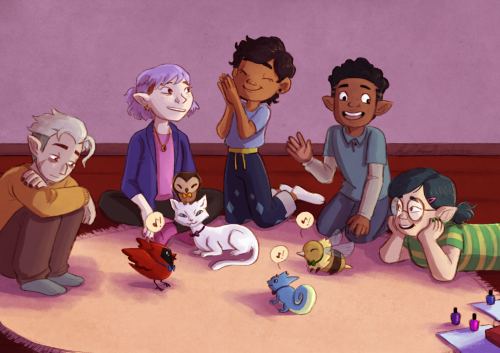
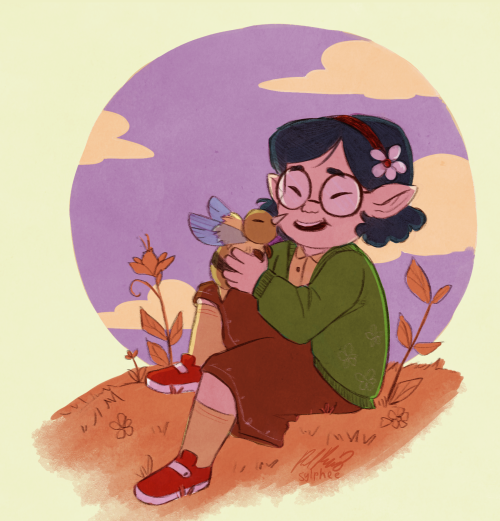

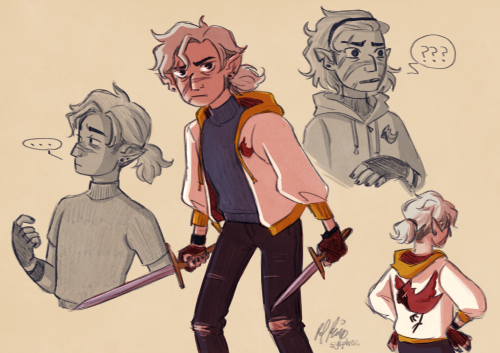



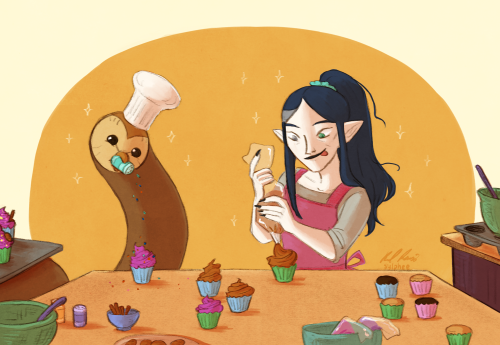

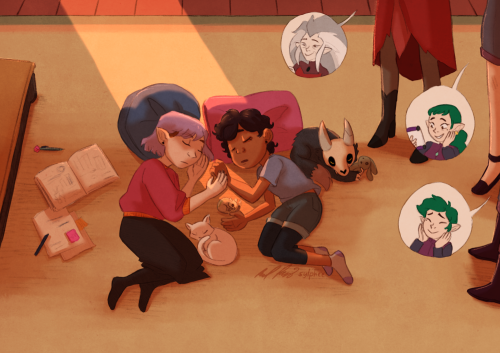
Here’s part one of all my Owl Fight attacks! This was so much fun to participate in :D
Bonus (from the Luz and Marcy prompt):


More Posts from Nix0nada and Others

happy Thursday the 20th
The key shortcut of “windows key” and “.” held together has changed my life
like
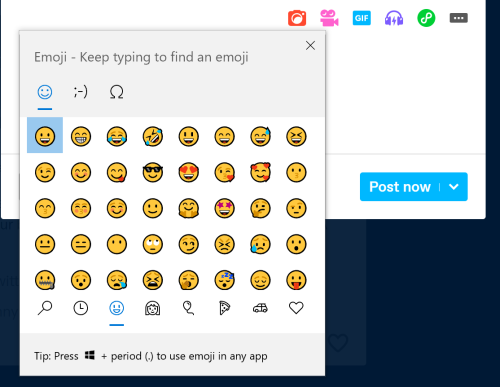
emoji access? supremely powerful 🙂💖
But
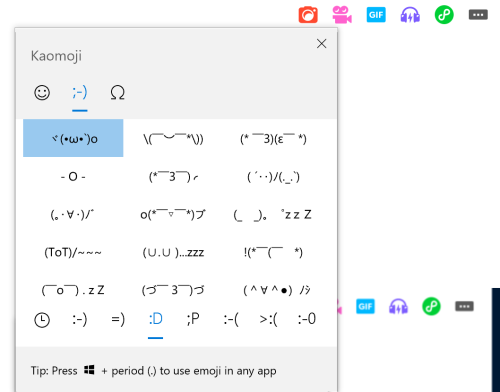
Kaomoji ?
The year is 2013 and I am unstoppable ヾ(•ω•`)o o(* ̄▽ ̄*)ブo(*°▽°*)o







Hello crk, I come in peace, I’ve been intrigued by a certain cookie(s)


outlast 10th anniversary rawr >:3
(i speedrun this so pls dont mind the weird perspective an d all)
hey guys! let’s talk about something called narrative distance.
you’ve probably heard of it before! narrative distance is the degree of separation between the reader and the narrator or character in the story. first person vs. third person is a good way to show narrative distance: consider how “I stomped inside, the pavement burning the soles of my feet, my wet hair sticking to the back of my sweaty neck, so hot my skin felt like it was melting” feels compared to the more impersonal “Jack stormed in, his face flushed with heat”.
now let’s be incredibly pretentious and translate narrative distance to minecraft roleplay. in this sense, a regular ranboo semi-lore stream where we watch c!ranboo spill all his deepest fears while recounting his thought process would be the equivalent of first person. there is very little distance between c!ranboo and the viewer. we get to see and hear and know everything c!ranboo sees and hears and knows, and if he doesn’t know something, we don’t know it either.
a tftsmp stream would be the equivalent of third person: we see c!karl in brief segments where he doesn’t reveal any inner thoughts or conflict, and the more edited and produced format means we’re separated from the character himself and the normally first-person minecraft experience. we aren’t seeing the world through his eyes, we’re watching his life from a bird’s eye view.
narrative distance can affect how we view characters and how sympathetic we are towards them. for example, during the exile arc, the viewers are firmly in c!tommy’s shoes, seeing everything that happens to him, hearing all his thoughts, living his life in the first person perspective nonstop for two weeks. we’re so incredibly close to c!tommy that c!dream’s arrival feels like a jumpscare. for contrast, when c!quackity’s torture of c!dream is mentioned or shown, it’s sanitized by production value, editing, montages, discretion cuts, and music overlaid on top. when the viewers get to see the characters interacting, they cut in after the gruesome bits are over, and it’s at most a ten minute snippet that’s not from the perspective of the victim.
although c!dream is the victim in this situation, it’s harder to see him as such and feel sympathetic, because it’s so very impersonal. the torture is more a word-of-god concept than an actual scene, because we never see it. we get very little idea of its effects, and on top of that, c!dream doesn’t even have a perspective to watch. compare to c!tommy, whose abuse was laid out in gritty detail, and whose cc has painstakingly acted out the lingering trauma in every stream since– which happen to be mainly in an unedited slice-of-life style. and we can connect that to the difficulty in viewing c!dream sympathetically as well: we as viewers were very close to a storyline where c!dream was a villain, and very separate from the storyline where he’s a victim. which impression of the character do you think would be stronger?
narrative distance contributes to how we view villains. c!schlatt is gleefully hated, a static but well-rounded character that we don’t feel any sympathy for. the viewers are distanced from him because he doesn’t have a perspective and only shows up for plot-related events on others’ streams or for comedy bits. nobody tries to look into his motivations and nobody’s sad when he dies. we’re not close to him, we don’t understand him, and we don’t need to.
then there’s c!quackity, who we watch go from a regular funnyman to an idealistic politician to a ruthless but caring advisor to a manipulative asshole focused on power. we walk in his shoes for every step of the way, we see his motivations and fears and inner thoughts, and we feel sympathy. and then he starts to distance himself, starts to edit and produce his streams and only show certain scenes without any emotional vulnerability, and starts acting as a villain. it’s kind of genius because he’s adding narrative distance while his character becomes harder to sympathize for. but we can still understand the character and feel pity for him, because we as viewers have lived his life and we know who he is and what he ultimately wants and needs.
narrative distance. it’s pretty cool.
I REFUSE to believe that Sukuna’s damn tattoos are only visible to the audience. It doesn’t make sense.
The tattoos are so fucking cool. Why would they not be visible to the characters?? Anyway I’m gonna rant beneath the cut about why the tattoos are visible.
First of all, it lacks practicality for the mangaka and the show’s animators. There’s plenty of other indicators that signal to the audience, if not the characters, when there’s been a switch. The manga uses different fonts, the anime has cast separate VAs for Sukuna and Itadori.
If they really needed an indicator, the tattoos could flash as Sukuna takes control, but sink away. They could use a shift in music, there could be a distinct difference in facial expressions and posture between Sukuna and Itadori. If there were never any tattoos in the first place, I don’t think anyone reading or watching JJK would be confused about the switch between Sukuna and Itadori. It’d be efficient for the creators, but still obvious to the audience, to write the story without any tattoo indicators.
Secondly, it’s more confusing if the tattoos are just an audience-only feature. I could be wrong, but I can’t think of any instances in any anime where such a prominent aspect of the show—the main villain’s physical appearance—is only visible to the audience. It just seems needlessly misleading.
Thirdly, when Megumi first meets Sukuna, Yuji takes over, but the tattoos are still there.

At this halfway-stage while Itadori is regaining control of his body, if the tattoos are still visible, it would be VERY hard for Megumi to figure out who’s in control. It also poses a question for him & other sorcerers around Yuji:
If Yuji can control the body while the tattoos are still visible, then who’s to say that Sukuna can’t control the body while the tatoos aren’t visible? At this point, sorcerers don’t have an answer to that. Gojo says that the two are literally combined, so who’s to say if their minds have combined too?
THIS is is why Megumi, Gojo, and Yaga all had doubts about whether they were speaking to Yuji or Sukuna. They lacked information. They were cautious and curious, because the tattoos weren’t an absolute indicator of Sukuna’s control.
Lastly, if the tattoos really are only visible to the audience, WHY WOULDN’T GEGE MENTION THAT SHIT ON DAY ONE?
Am I wrong??? WHEN and WHERE did Gege Akutami say that the tattoos are invisible?? pls i need closure 💀
-
 vulpecula404 liked this · 5 months ago
vulpecula404 liked this · 5 months ago -
 oumarmichaelkonate liked this · 5 months ago
oumarmichaelkonate liked this · 5 months ago -
 fermented-writers-block reblogged this · 5 months ago
fermented-writers-block reblogged this · 5 months ago -
 oniricbluebird reblogged this · 8 months ago
oniricbluebird reblogged this · 8 months ago -
 slurpieshowdown-ss liked this · 8 months ago
slurpieshowdown-ss liked this · 8 months ago -
 trashpandaperson liked this · 9 months ago
trashpandaperson liked this · 9 months ago -
 holiiiiiiii liked this · 10 months ago
holiiiiiiii liked this · 10 months ago -
 ghostspooks22-blog liked this · 10 months ago
ghostspooks22-blog liked this · 10 months ago -
 ticklish-daydreams liked this · 1 year ago
ticklish-daydreams liked this · 1 year ago -
 bingus9000 liked this · 1 year ago
bingus9000 liked this · 1 year ago -
 lukanettex2 liked this · 1 year ago
lukanettex2 liked this · 1 year ago -
 lenacraft reblogged this · 1 year ago
lenacraft reblogged this · 1 year ago -
 lenacraft liked this · 1 year ago
lenacraft liked this · 1 year ago -
 coolcathj liked this · 1 year ago
coolcathj liked this · 1 year ago -
 lilylovescows liked this · 1 year ago
lilylovescows liked this · 1 year ago -
 blogger289 liked this · 1 year ago
blogger289 liked this · 1 year ago -
 pilsfecpeune liked this · 1 year ago
pilsfecpeune liked this · 1 year ago -
 sparklyballoonballoon liked this · 1 year ago
sparklyballoonballoon liked this · 1 year ago -
 xenia12 liked this · 1 year ago
xenia12 liked this · 1 year ago -
 estoy-vivo liked this · 1 year ago
estoy-vivo liked this · 1 year ago -
 livelaughlovezaya liked this · 1 year ago
livelaughlovezaya liked this · 1 year ago -
 1anxiousbeancrying liked this · 1 year ago
1anxiousbeancrying liked this · 1 year ago -
 viosoul liked this · 2 years ago
viosoul liked this · 2 years ago -
 thestrangelittlealienbenson liked this · 2 years ago
thestrangelittlealienbenson liked this · 2 years ago -
 shiteymighty liked this · 2 years ago
shiteymighty liked this · 2 years ago -
 kingo456 liked this · 2 years ago
kingo456 liked this · 2 years ago -
 moon-martyr liked this · 2 years ago
moon-martyr liked this · 2 years ago -
 charlleswithtwoll liked this · 2 years ago
charlleswithtwoll liked this · 2 years ago -
 minionsockinthepark liked this · 2 years ago
minionsockinthepark liked this · 2 years ago -
 supernatural618 reblogged this · 2 years ago
supernatural618 reblogged this · 2 years ago -
 supernatural618 liked this · 2 years ago
supernatural618 liked this · 2 years ago -
 piningpebbles liked this · 2 years ago
piningpebbles liked this · 2 years ago -
 dragonflame25 liked this · 2 years ago
dragonflame25 liked this · 2 years ago -
 elisealise liked this · 2 years ago
elisealise liked this · 2 years ago -
 must-be-believed-to-be-seen liked this · 2 years ago
must-be-believed-to-be-seen liked this · 2 years ago -
 perpetualboredom32 liked this · 2 years ago
perpetualboredom32 liked this · 2 years ago -
 ihaveshippedit liked this · 2 years ago
ihaveshippedit liked this · 2 years ago -
 pulmonaryplutonium liked this · 2 years ago
pulmonaryplutonium liked this · 2 years ago -
 rosilin liked this · 2 years ago
rosilin liked this · 2 years ago -
 bluenixxi liked this · 2 years ago
bluenixxi liked this · 2 years ago -
 tarasparkels1017 liked this · 2 years ago
tarasparkels1017 liked this · 2 years ago -
 timtsike liked this · 2 years ago
timtsike liked this · 2 years ago -
 anyikis liked this · 2 years ago
anyikis liked this · 2 years ago

Any digital art I do is done by finger on my phone / twt:Nix_nada /ig: _nix_nada
235 posts


